A WINTER WEEKEND ON WHIDBEY ISLAND
Tired, oh so tired by our semi-lockdown due to Covid, we decided to take a quick getaway to an island we can see from our living room. An island with almost no virus cases. Feeling secure, we joined the line at the ferry dock in the nearby town of Mukilteo for the twenty-minute cruise to the tiny town of Clinton on the south end of Whidbey Island.

Named for Joseph Whidbey, Master of HMS Discovery, who along with expedition leader Captain George Vancouver, explored the island in 1792. They weren’t the first to arrive as the island was long occupied by the Skagit, Swinomish and other tribes who arrived thousands of years earlier, subsisting on the abundant salmon, shellfish, deer, and waterfowl. The tribes suffered the same fate as elsewhere when settlers moved in to take advantage of the timber, fishing, and farming opportunities.
The lumber mills are gone but for an occasional remnant like an old “wig-wam” sawdust burner.

Our first stop was in the lovely little town of Langley on the Saratoga Passage, a narrow strait good for whale watching.

The town is home to art galleries, B&Bs and our favorite shop, the delightfully named Music for the Eyes. We never miss a stop whenever we are on the island and have several times come home with irresistible carpets to warm our toes or to just enjoy looking at the design and dream of faraway places. Not a typical rug store, the shop has an astounding selection of carpets, clothing and other art from Turkey, the Caucus, and the “stans,’ where the owners, former State Department staff, worked. This time I fell in love with a linen wall hanging embroidered with wool designs. It was formally a room divider or wall decoration in a yurt in Kazakhstan and sadly too big for our home.
Coupeville, founded in 1854, was just a few miles further north. Like Langley, the main street is lined with eateries, often featuring the local and delicious Penn Cove mussels, along with galleries and B&Bs.

The town has the distinction of being part of Ebey’s Landing National Historical Reserve established “to preserve and protect a rural community which provides an unbroken historic record from 19th century exploration and settlement in Puget Sound to the present time.” Unusually, the area now encompasses State parks, farms, private homes, woodland, prairies, beaches, trails, and an underwater marine park.
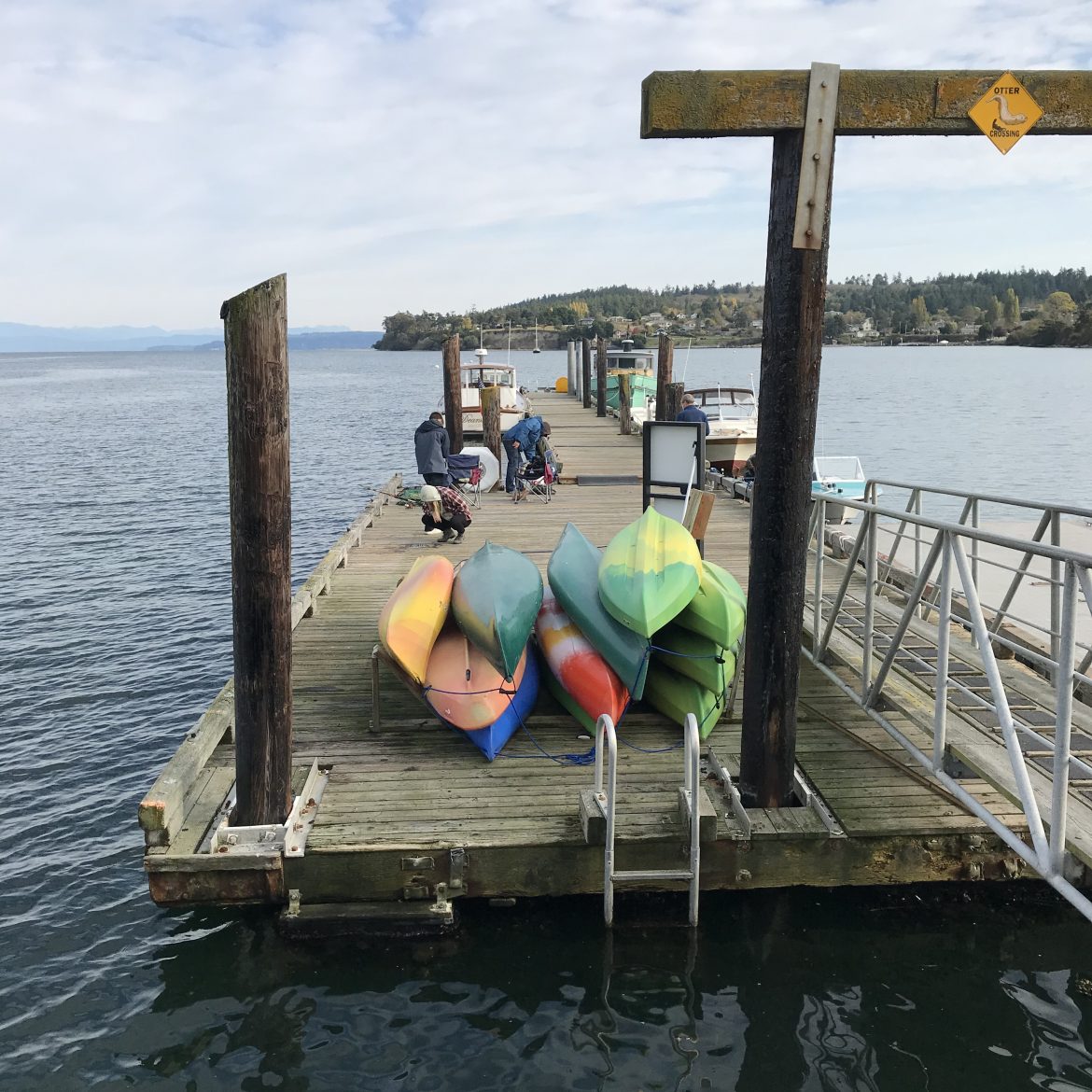
The historic farmstead is a few miles from the town center and overlooks the western coast.
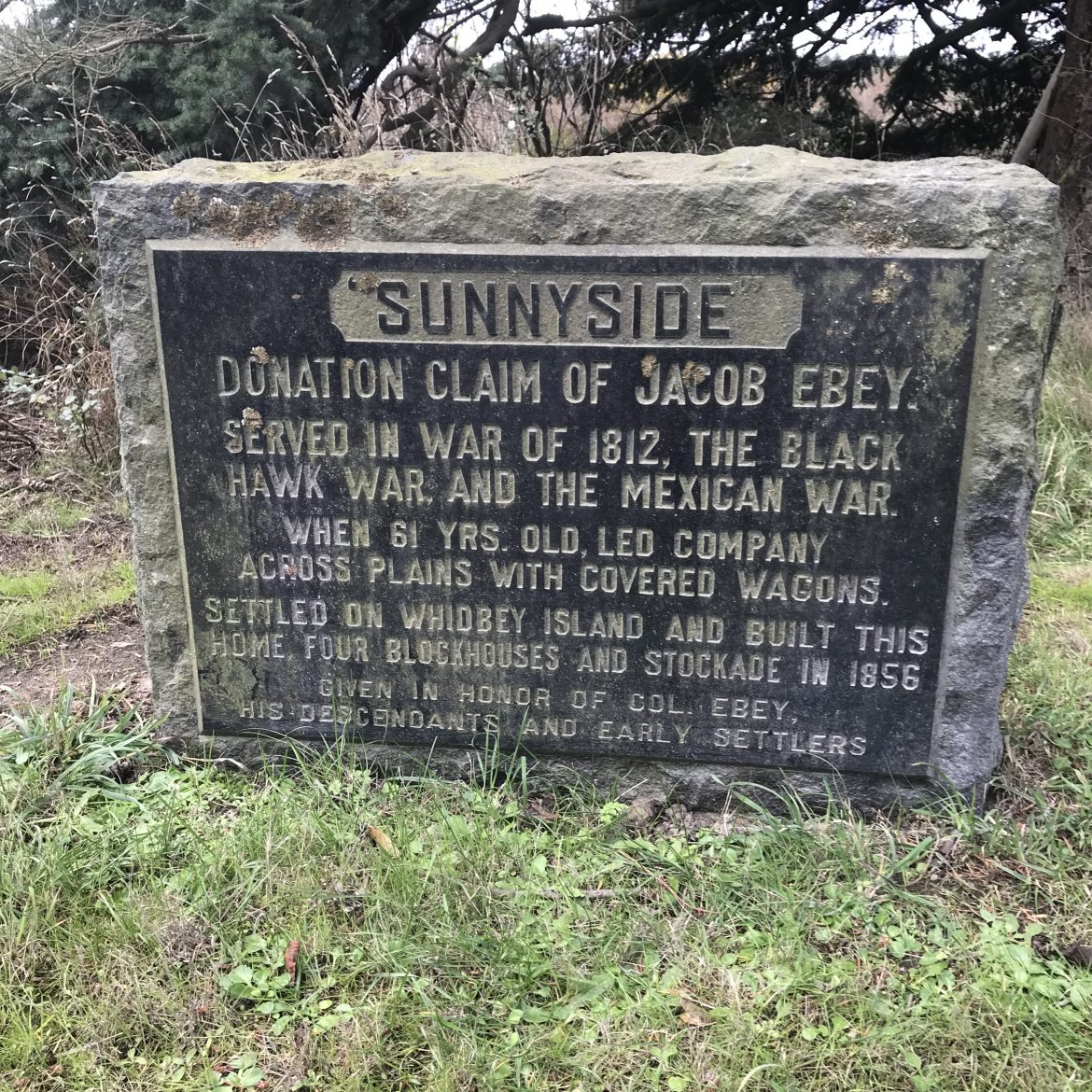
We walked a wooded trail starting from the Jacob Ebey House, peering in the window of the small dwelling and the block house built for protection from marauding tribes canoeing down from the Canadian Coast. Ebey was killed in one of the raids and he now rests in the nearby and cheerfully named Sunnyside Cemetery along with many other early settlers.
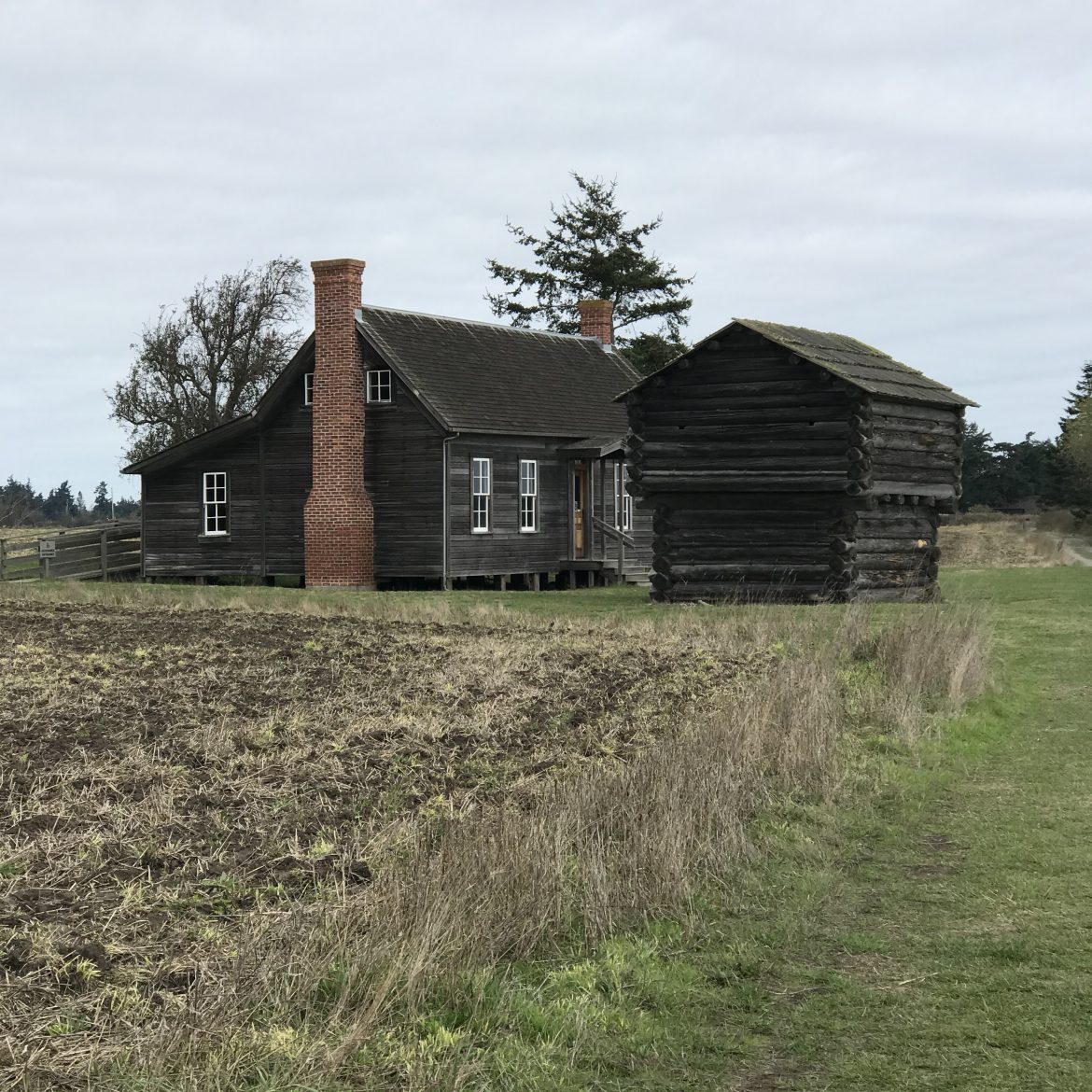
A white marble monument in the cemetery erected in honor of someone named A.W. Bush, who died in 1933, caught my eye because of the little marker announced it as the resting place of a suffragette.

The island is long, narrow and twisty and lined with bays, beaches and headlands. It also hosts my favorite Pacific Northwest tree, Madrona, with its glowing chartreuse and ochre bark. The trees often lean over a bluff as if to look at the inland sea.
The Western side of the island marks the entrance to Puget Sound through the narrow Admiralty Inlet where ships gain access to the cities of Seattle and Tacoma, as well as Everett and Bremerton – both with large Navy bases. Military minds recognized the strategic importance of the area early on. Three forts known as The Triangle of Fire were built from 1856 to 1897 to guard the inner Sound. None of the forts every fired a shot in anger and all three are now state parks where visitors can wander, picnic, and enjoy festivals.
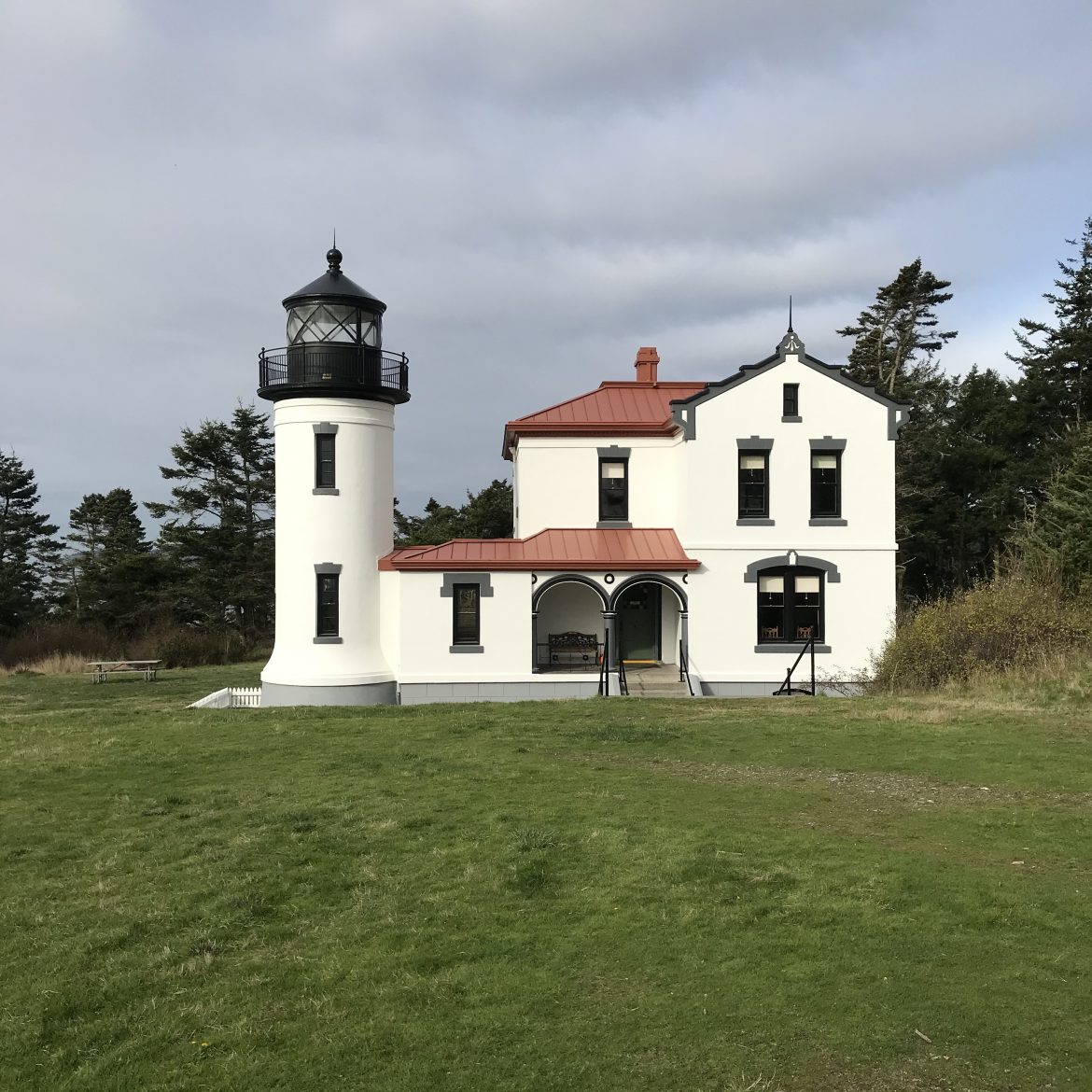
For those who are interested in military history, Fort Casey, one of the three fortresses, features tunnels, speaking tubes, shot and powder rooms and guns mounted on retractable swiveling arms. Husband loved poking around the examples of earlier military might; I walked to the lighthouse originally built in 1859 and replaced in 1903, and watched the deer, one of which, a doe, was leaping and bounding in a frenzy of excitement: Up a hill, pirouette, leap, leap, then down the hill. It looked like fun but the sun was waning and it was time to head toward our temporary home.
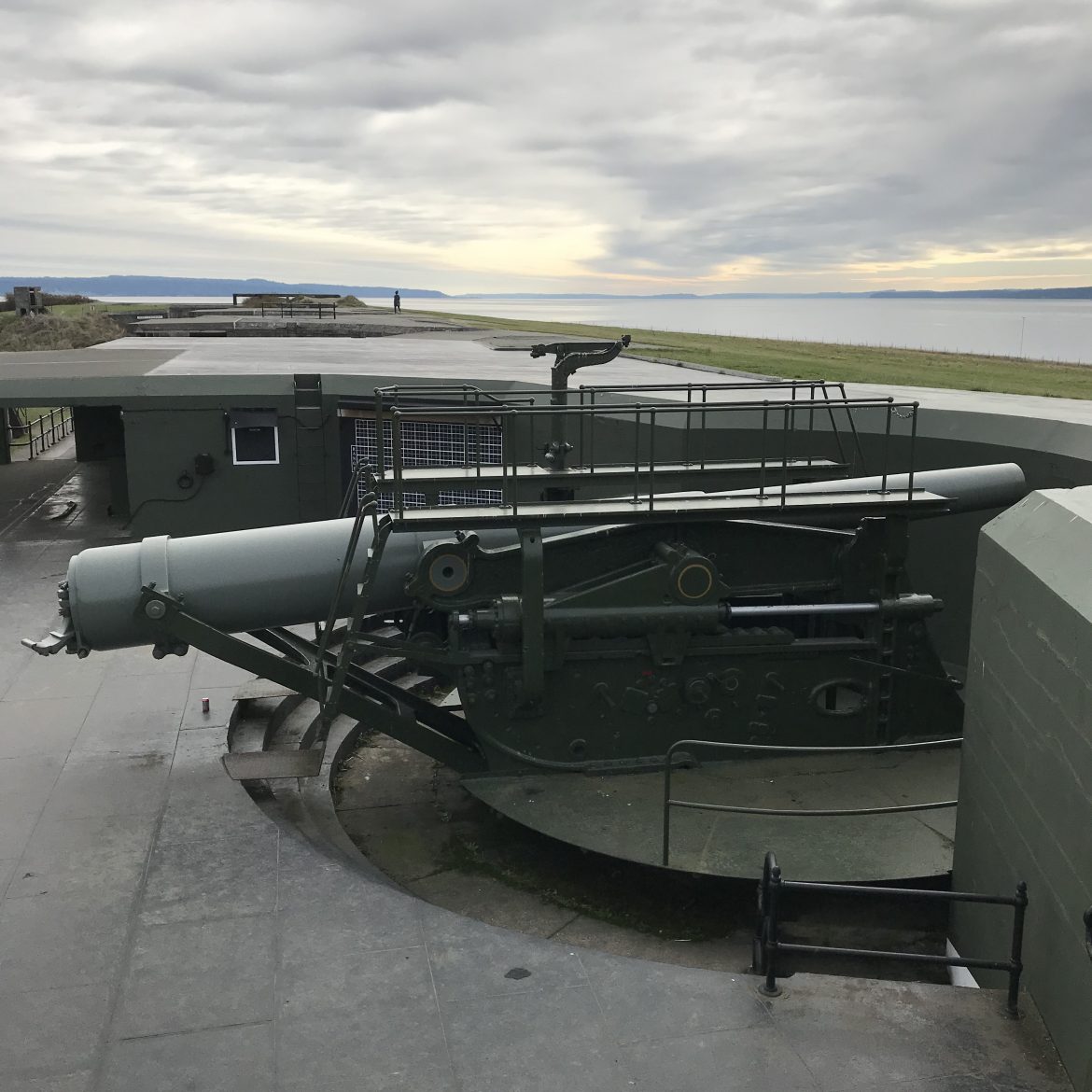
Not wanting to be close to anyone else, we’d booked a VBRO (number 646795) – a lovely house with a great view of the water looking west toward the Kitsap Peninsula and the sunset. The garden must be beautiful in the summer because it is landscaped with many dozens of lavender shrubs. The house comes with beach privileges so we wandered down to the now-deserted area to walk along the shore. The evening in front of the fireplace with a glass of wine was time for imagining stories about driftwood ogres and mermaids who braid long strands of kelp for our pleasure.

All photos copyright Judith Works
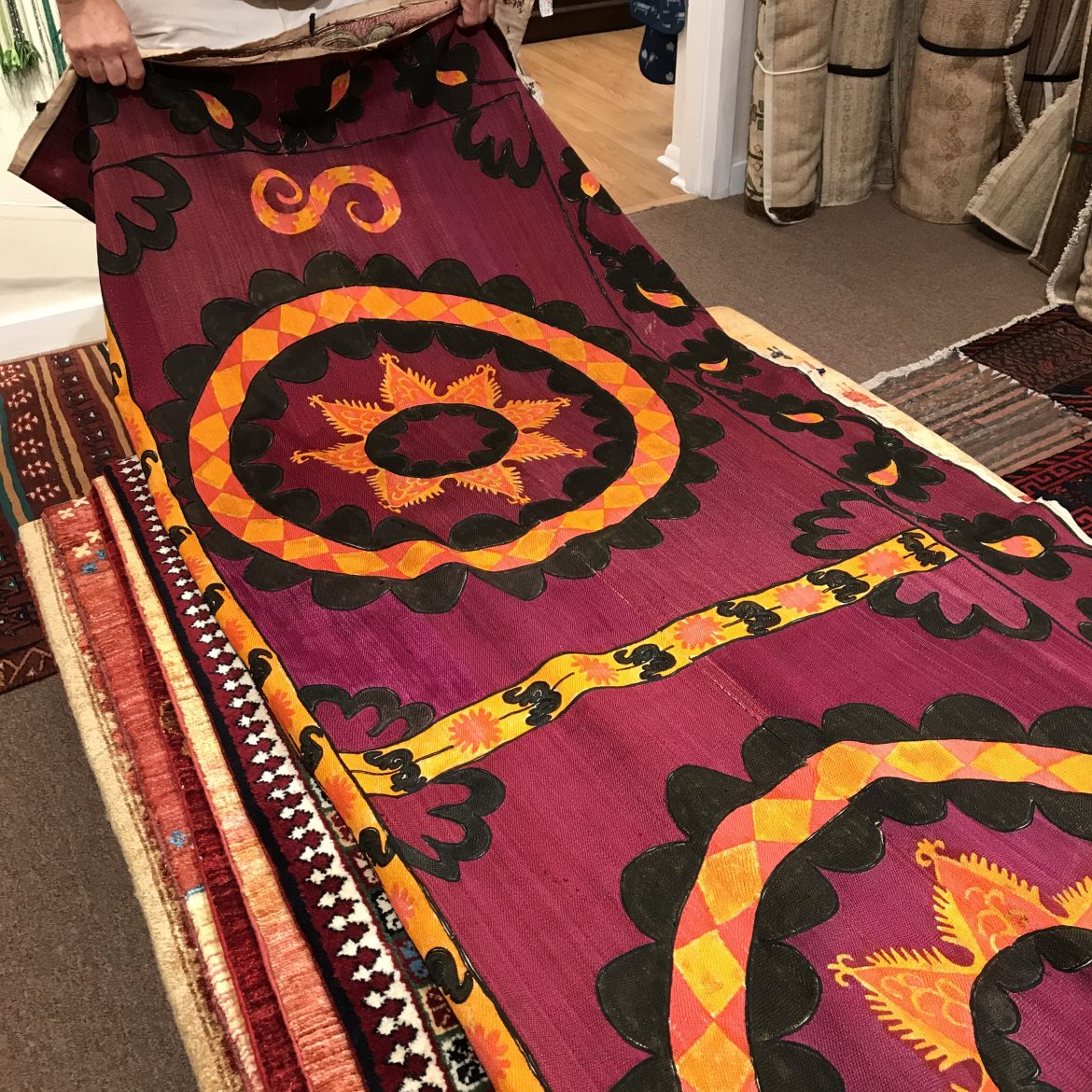
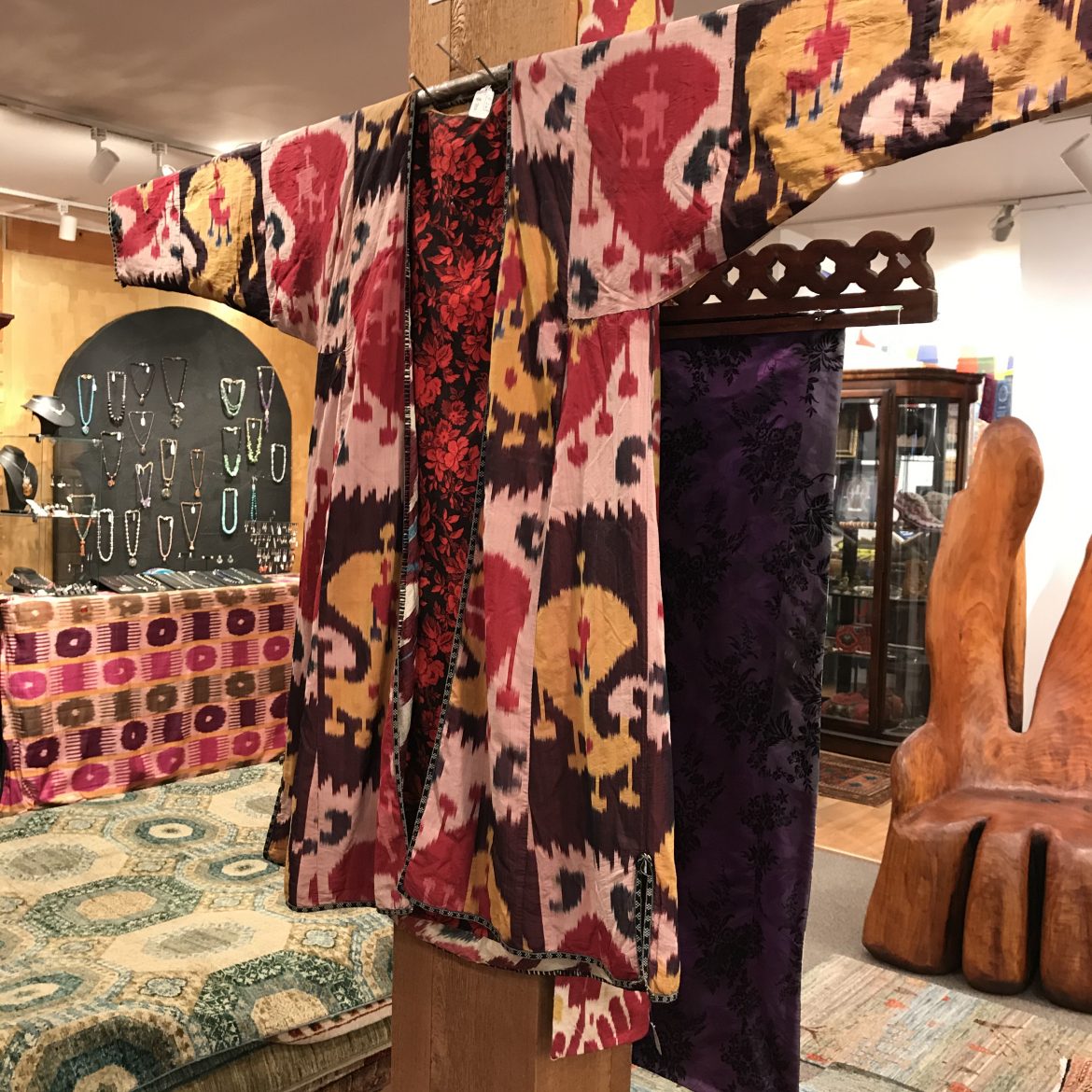


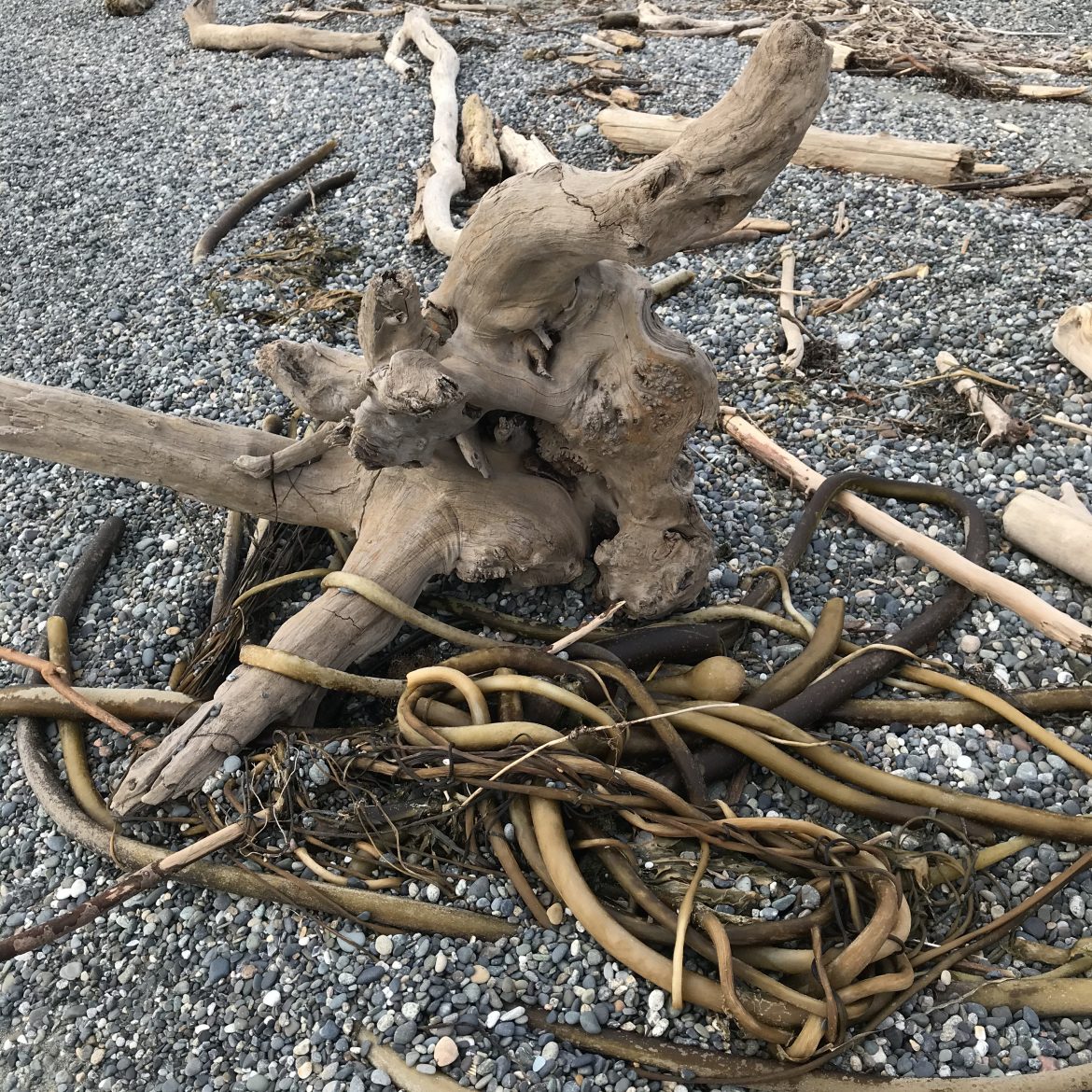
Kathryn Schipper
Lovely trip, and wonderful photos!
Susan E Frederick
Judith, beautifully written — and even though we spend a lot of time on Whidbey, you provided much historical knowledge that we were unaware of.
VivianCMurray
Such a great area to explore. Thanks for the name of the shop; I’ve been wanting to go there! A friend of a friend told me about it last year but I wasn’t sure exactly where it was. Looks like a lovely getaway, Judith.